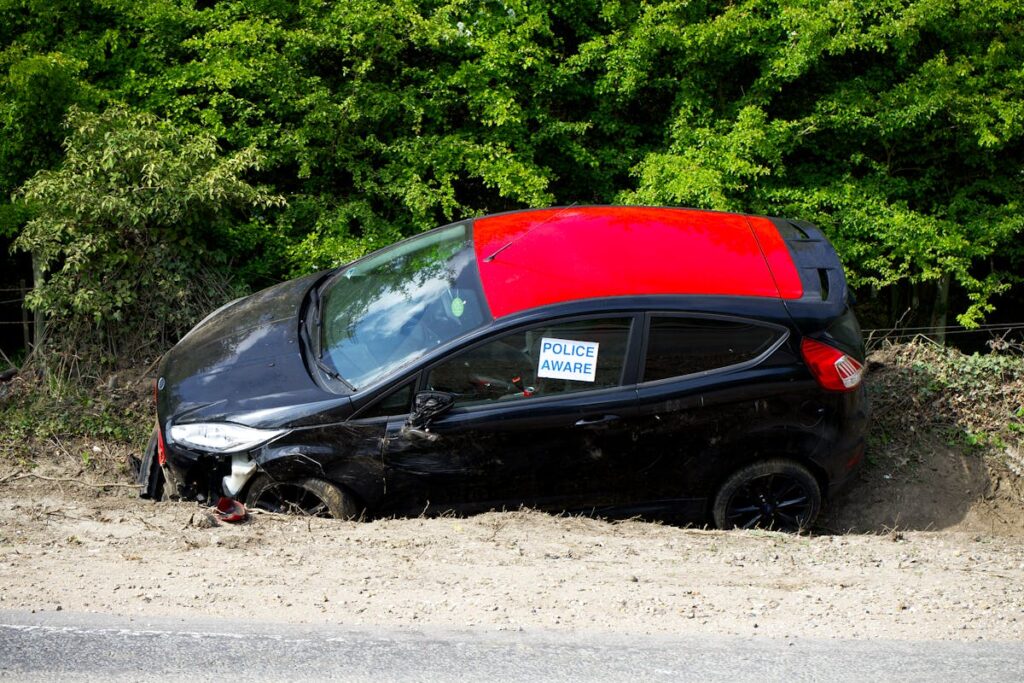Crash testing and vehicle safety ratings are essential components in the analysis and evaluation of automobile safety, providing consumers and manufacturers with accurate, reliable data on vehicle performance under various accident scenarios. These ratings not only impact consumer purchasing decisions but also influence manufacturers’ design and development processes. As testing methodologies advance, the question arises: how will these changes further impact vehicle safety, and what implications might they have for the future of automobile manufacturing and consumer choice?
Understanding Crash Testing
The steel behemoth, a car, hurtles towards a concrete barrier in a controlled environment, exemplifying the essence of crash testing. This process, fundamental to automotive safety, employs intricate testing methodologies to mimic real-world scenarios, aiming to ascertain the protective capabilities of various vehicle models.
Crash testing hinges on the replication of potential accident situations. A thorough analysis of variables such as speed, angle of impact, and vehicle mass forms the basis of these simulated conditions. This rigorous evaluation, in turn, aids in the development and refinement of life-saving technologies embedded within the vehicles, such as airbags, crumple zones, and advanced driver-assistance systems.
The analytical data gathered from these crash tests are pivotal, not just for manufacturers, but also for consumers. This information serves as the foundation for vehicle safety ratings, which guide consumers in making informed purchasing decisions. Ultimately, crash testing’s goal is to continually push the boundary of vehicle safety, working towards the ideal scenario where vehicular accidents result in minimal injuries. In such a context, understanding crash testing is essential to appreciating its role in promoting road safety.
Types of Vehicle Crash Tests
Building on our understanding of the importance of crash testing, we now turn our attention to the various types of vehicle crash tests conducted by organizations such as the National Highway Traffic Safety Administration (NHTSA) and the Insurance Institute for Highway Safety (IIHS).
Two primary types of crash tests are frontal impact and side crash tests. Frontal impact tests are designed to replicate a head-on collision between two vehicles of similar size and weight, moving at the same speed. This test examines the structural integrity of the vehicle’s front end and the effectiveness of the safety systems in protecting occupants.
Side crash tests, on the other hand, simulate a perpendicular impact to the vehicle’s side, such as what occurs in a T-bone collision. This form of testing focuses on evaluating the durability of the vehicle’s side structure and the efficiency of side airbags in reducing injuries.
Both these tests are essential in understanding a vehicle’s crashworthiness. The data obtained from these tests assist in the development of safer vehicles, underlining the significance of such rigorous testing procedures in the quest for vehicle safety.
Interpreting Safety Ratings
Delving into the domain of safety ratings, it is vital to unravel their interpretation for an insightful understanding of vehicle safety. These ratings are derived from a series of crash tests, and they provide a quantifiable measure of how a vehicle will perform under various crash conditions.
Safety rating discrepancies can arise from differences in testing methodologies, vehicle specifications, and the extent of damage during tests. For instance, a vehicle might receive different ratings from different testing agencies due to variations in the testing procedures or the crash scenarios simulated. Analyzing these discrepancies can provide a more thorough picture of a vehicle’s safety performance.
Consumer perception plays a pivotal role in interpreting safety ratings. Consumers tend to equate higher ratings with superior safety, which is generally accurate. However, it is important to comprehend that a high safety rating doesn’t signify invulnerability but rather indicates a comparatively better performance in crash tests. Consumers should also understand that safety ratings are a relative measure, meaning a vehicle’s rating is determined in comparison to other vehicles in the same category.
Importance of Vehicle Safety Ratings
Having shed light on the interpretation of safety ratings, it’s now significant to scrutinize their role and importance. Safety ratings provide a quantifiable measure of a vehicle’s preparedness to withstand and prevent accidents, eliciting consumer awareness about the relative safety of different vehicles. They play a pivotal role in guiding consumers towards safer vehicles, thereby indirectly incentivizing manufacturers to invest in safety innovations and advancements.
Furthermore, these ratings serve as a benchmark for manufacturers, spurring competition that gradually elevates safety standards across the industry. It’s not just about building faster, more luxurious cars, it’s also about making them safer. This competitive edge is driven by the knowledge that higher safety ratings can enhance brand reputation and market share.
Additionally, vehicle safety ratings can influence legislation and regulatory bodies, shaping safety standards and protocols. They provide data-driven insights that can guide policy decisions regarding vehicle safety requirements.
Role of National Traffic Safety Administration
The National Traffic Safety Administration (NHTSA) plays a critical role in establishing and enforcing vehicle performance standards and regulations to guarantee the safety of drivers, passengers, and pedestrians. These standards, which include an extensive suite of crash tests, directly influence the design and structural integrity of vehicles, compelling manufacturers to prioritize safety. An analysis of NHTSA’s impact on vehicle design, consequently, offers insight into the intricate relationship between regulatory measures, crash testing, and vehicle safety ratings.

NHTSA’s Safety Standards
Establishing rigorous regulations for vehicle safety, the National Highway Traffic Safety Administration (NHTSA) plays a pivotal role in maintaining and enhancing road safety in the United States. NHTSA regulations are derived from the Federal Motor Vehicle Safety Standards (FMVSS), which encompass a broad range of safety areas including vehicle crashworthiness, crash avoidance, and post-crash survivability.
Bearing the mandate for safety compliance, NHTSA is responsible for ensuring that all motor vehicles on U.S. roads meet the FMVSS. The agency conducts thorough crash tests and safety evaluations to affirm compliance. In the event of non-compliance, NHTSA holds the authority to enforce penalties, recall non-compliant vehicles, and mandate necessary modifications.
Additionally, NHTSA regulations are continuously revised to incorporate advancements in safety technology and emerging research findings. This dynamic approach facilitates the integration of new safety features into vehicles, making them safer and reducing the risk of fatal accidents.
Impact on Vehicle Design
In light of NHTSA’s safety standards and their ongoing revisions, a significant impact is made on the design of vehicles. The drive to meet and exceed these standards necessitates the continual evolution of design innovations and safety engineering techniques. These modifications often involve changes in structural design, implementation of advanced materials, and integration of innovative safety technologies.
The safety engineering aspect is particularly critical as it focuses on minimizing potential hazards during a crash. This involves rigorous analysis of crash data and meticulous adjustments to vehicle design based on these findings. For instance, the development of crumple zones, areas of a vehicle designed to deform and crumple in a collision, is a direct result of this process.
Design innovations are also influenced by the NHTSA’s standards. These include the incorporation of advanced airbag systems, enhanced seat belt mechanisms, and the installation of electronic stability control systems. These features not only aid in meeting safety standards but also contribute to the overall consumer appeal of the vehicle.
Through the influence of the NHTSA’s safety standards, one can appreciate the significant role they play in promoting the continual enhancement of vehicle design and safety engineering.
How Manufacturers Improve Safety Ratings
A significant number of manufacturers are relentlessly working to enhance their vehicle safety ratings. This intense focus is primarily driven by market demands for safer vehicles and regulatory changes that compel adherence to stringent safety standards.
Manufacturers are leveraging cutting-edge safety innovations to improve their ratings. These include advancements in collision avoidance technologies such as automatic emergency braking, lane-keeping assistance, and adaptive cruise control. These systems use radar, cameras, and other sensors to detect potential hazards and either alert the driver or take corrective action to prevent accidents.
On the structural front, manufacturers are making use of high-strength steel and other advanced materials to design vehicle bodies that offer maximum protection during crashes. The use of crumple zones, areas of a vehicle designed to deform and crumple in a crash, absorb the energy of an impact, protecting the vehicle’s occupants from the full force of a collision.
Changes in regulatory standards also drive these improvements. As safety testing protocols evolve to include new crash scenarios and more stringent criteria, manufacturers must continually adapt their design and technology strategies to meet these new benchmarks. Consequently, the continuous cycle of innovation and regulatory changes leads to safer vehicles on the road.
Buying Guide: Safety Ratings and Features
To make an informed vehicle purchase, the potential buyer must comprehend the implications of safety ratings and their correlation with crash test outcomes. Essential vehicle safety features, such as airbags, anti-lock braking systems, and electronic stability control, should be scrutinized to guarantee they meet industry standards. Finally, evaluating a vehicle’s overall safety performance, which encompasses structural integrity, injury prevention, and post-collision safety, leads to a thorough understanding of its true safety caliber.
Understanding Safety Ratings
Deciphering the maze of safety ratings can empower a consumer to make informed decisions when purchasing a vehicle. Safety ratings, derived from rigorous testing procedures, offer measurable data on how a vehicle can protect its occupants during a collision. Rigorous crash test innovations have considerably refined these safety rating methodologies in recent years.
These methodologies typically involve a series of controlled crash tests under various conditions. The vehicles are fitted with crash test dummies to simulate human occupants, and the impact on these dummies during the collision is meticulously recorded. The results of these tests provide empirical data for assigning safety ratings.
In addition to frontal and side-impact tests, innovative methodologies also include rollover tests to evaluate a vehicle’s propensity to roll over and the effectiveness of its protective structures during such incidents. Furthermore, emerging technologies such as autonomous emergency braking and lane-keeping systems are also assessed under these methodologies.
Understanding these safety ratings and what they represent is crucial for consumers. They not only provide insights into a vehicle’s safety performances under different scenarios but also allow comparison between different models or classes of vehicles. An informed understanding of these ratings aids in making a safe and sound vehicle purchasing decision.
Essential Car Safety Features
Steering through the domain of car safety features can seem intimidating, but it’s an essential task for any discerning buyer. Active headrests are a remarkable feature aimed at reducing the risk of whiplash in a rear-end collision. Airbag systems advance safety by inflating upon impact, cushioning passengers from severe injury.
Pedestrian detection systems, using radar and camera data, can anticipate a collision with a pedestrian and automatically apply the brakes. Similarly, blind spot monitoring uses sensors to alert the driver of vehicles in their blind spot, enhancing lane changing safety.
Electronic stability and traction control systems work harmoniously to maintain vehicle control in adverse driving conditions. These systems interpret data from various sensors and modulate the car’s engine power and braking force to each wheel, mitigating skids or spins.
Adaptive headlights pivot in the direction the car is moving, improving night driving visibility. Lane departure warnings alert drivers when they unintentionally deviate from their lane, while rearview cameras provide a clear view of the area behind the car.
Lastly, the vehicle structure itself is crucial for safety. Crumple zones are designed to absorb and dissipate the force of a collision, protecting the car’s occupants. These features collectively elevate a vehicle’s safety profile.
Evaluating Vehicle Safety Performance
A buyer’s journey in the automotive market is incomplete without a thorough examination of a vehicle’s safety performance. Key components of this evaluation involve evaluating collision avoidance systems and pedestrian protection measures, which are essential to ensuring ideal safety.
Collision avoidance systems are designed to prevent or reduce the severity of a crash. These systems use sensors, cameras, and radar technology to detect potential hazards and respond accordingly, either by providing alerts to the driver or by taking control of the vehicle to avoid an impending collision. Evaluating the efficiency of these systems includes validating the sensitivity and response time to various stimuli, including other vehicles, pedestrians, and obstacles.
Pedestrian protection, another vital aspect of vehicle safety, involves mechanisms designed to minimize injury to pedestrians in the event of a collision. These may include exterior airbags, automatic braking systems, and hood lifters that create a crumple zone. A thorough evaluation for pedestrian protection considers the effectiveness of these features in various scenarios, such as different impact speeds and angles.
Future of Crash Testing and Safety Ratings
As we cast our gaze towards the horizon of automotive safety, significant changes loom in the domain of crash testing and vehicle safety ratings. A revolution, driven by technology advancements, is transforming traditional testing methodologies, and crash simulation evolves into a more reliable and precise tool.
The advent of autonomous vehicles necessitates regulatory changes to accommodate new scenarios and challenges. AI integration in these vehicles introduces another layer of complexity, mandating a shift from mere physical testing to advanced predictive modeling and data analytics, ensuring a thorough evaluation. This approach allows prediction and mitigation of potential risks before they materialize on the road.
As global standards evolve, the role of data analytics grows more critical, integrating vast data from various sources to generate actionable insights. This shift promotes a more proactive approach to safety, focusing on prevention rather than reaction.
Simultaneously, increased consumer awareness is pushing manufacturers to go beyond the minimum required safety standards, creating a competitive environment that prioritizes safety. Hence, the future of crash testing and vehicle safety ratings will not only be shaped by technological and regulatory developments but also by the informed choices of consumers.
Frequently Asked Questions
How Are Child Safety Seats Evaluated in Crash Tests?
Child safety seats undergo rigorous evaluation, adhering to crash test standards. Factors assessed include child seat installation, structural integrity, and restraint effectiveness. These tests guarantee ideal protection and safety for children during potential vehicular accidents.
What Is the Cost of Conducting a Vehicle Crash Test?
The cost of conducting a vehicle crash test largely depends on various factors, including the complexity of test facilities and crash test methodologies employed, with prices generally ranging from several thousands to over a hundred thousand dollars.
Are Luxury Cars Generally Safer Than Budget Ones?
Luxury cars, typically equipped with advanced safety technology and luxury features, generally offer higher safety standards than budget cars. However, safety largely depends on individual models and their specific safety features rather than the car’s price category.
Do Electric and Hybrid Vehicles Perform Differently in Crash Tests?
Electric and hybrid vehicles demonstrate unique performance in crash tests due to factors like battery safety and weight distribution. These aspects can impact the vehicle’s stability and energy absorption, influencing overall crash test outcomes.
How Does Vehicle Size and Weight Influence Crash Test Results?
Vehicle size and weight markedly influence crash dynamics. Larger, heavier vehicles generally absorb impact forces better, leading to enhanced occupant protection. However, design and safety features also play essential roles in determining crash test results.

